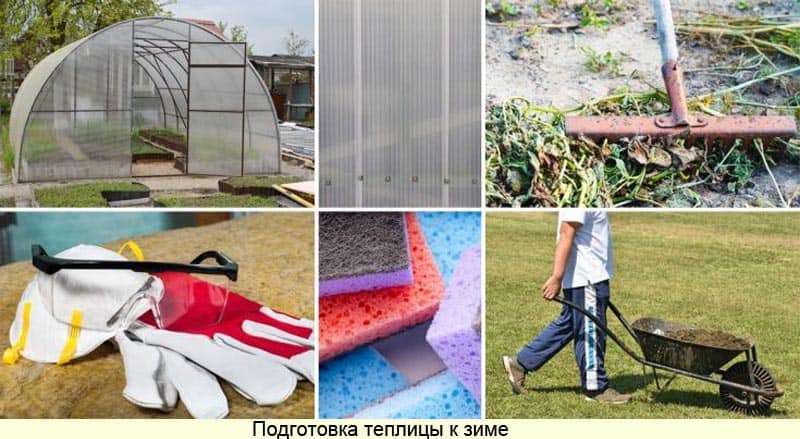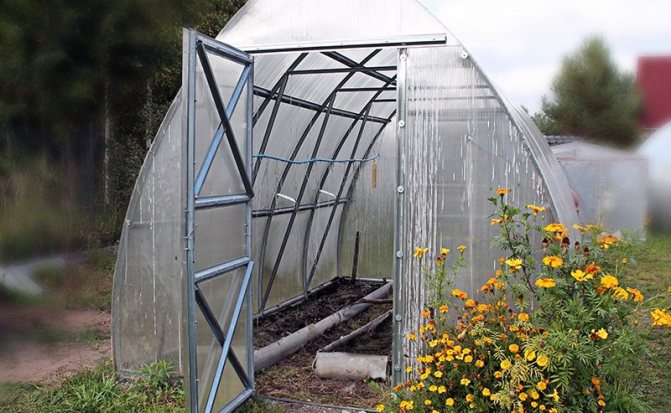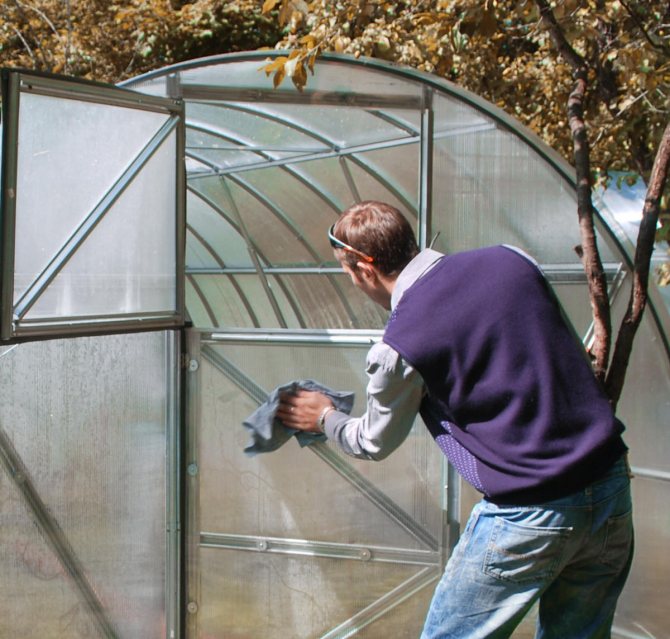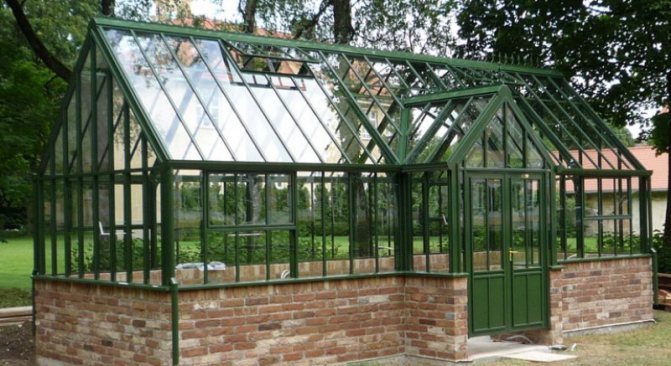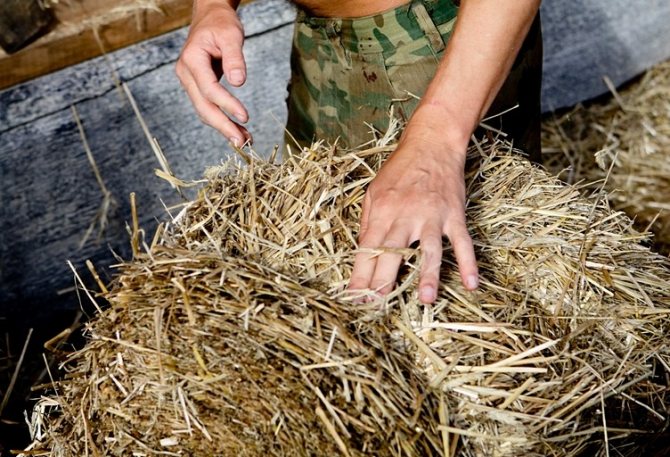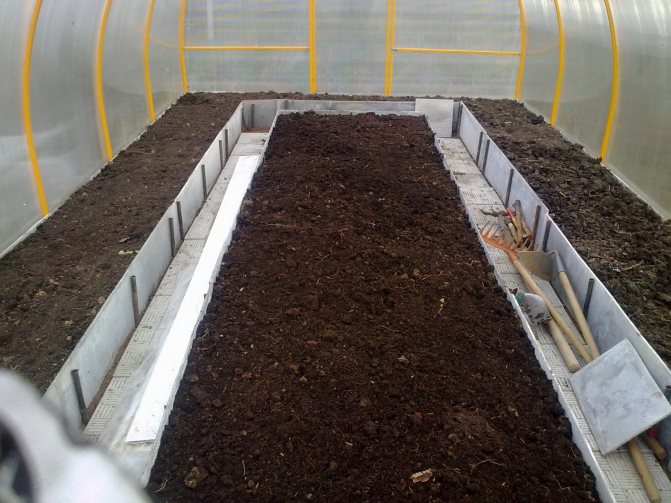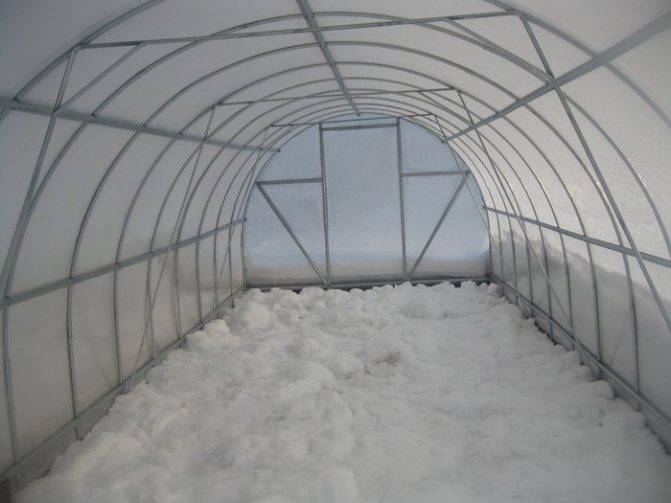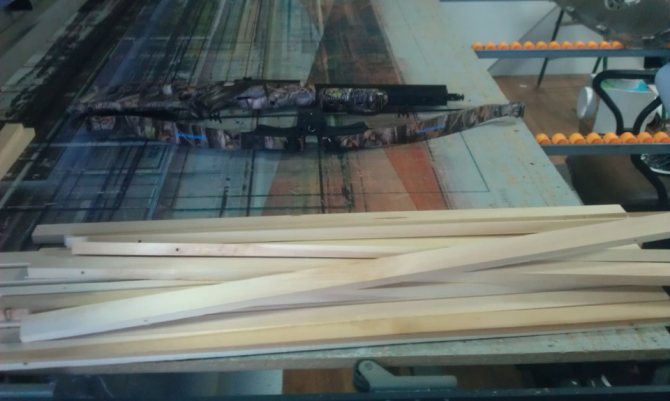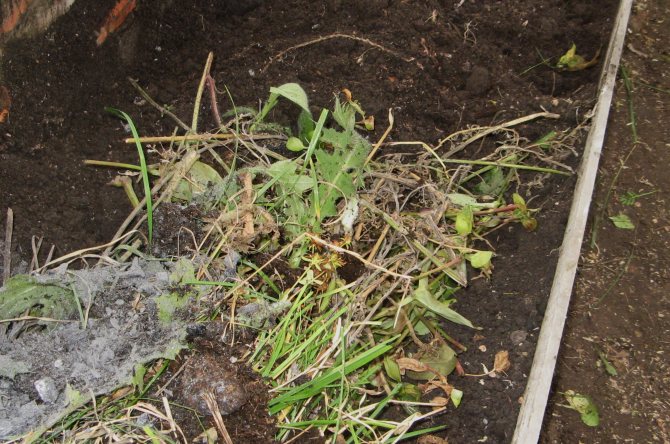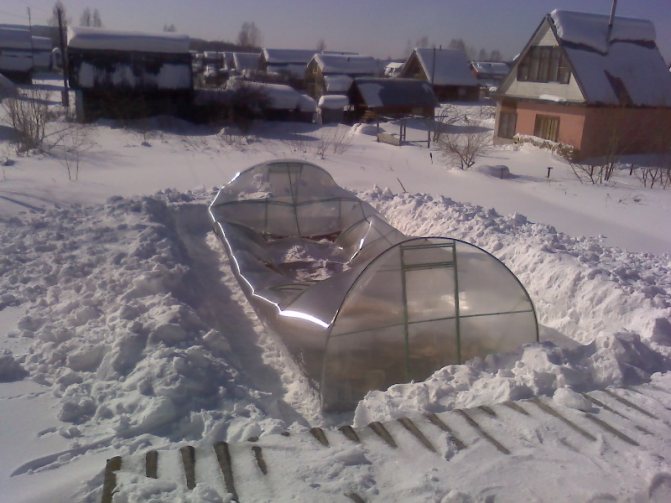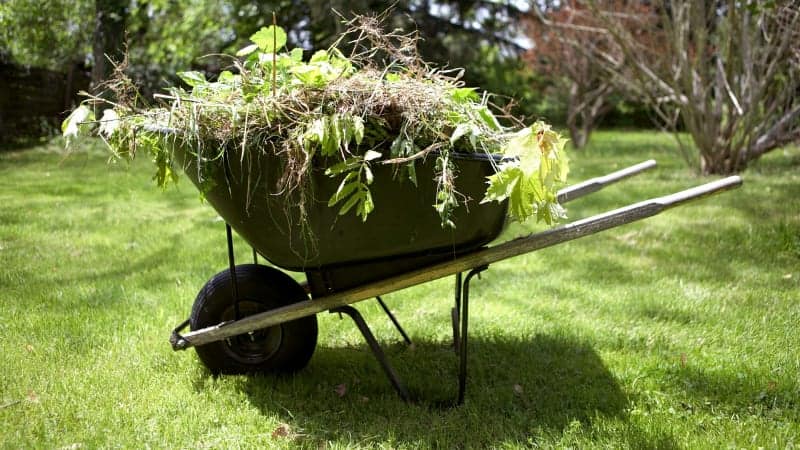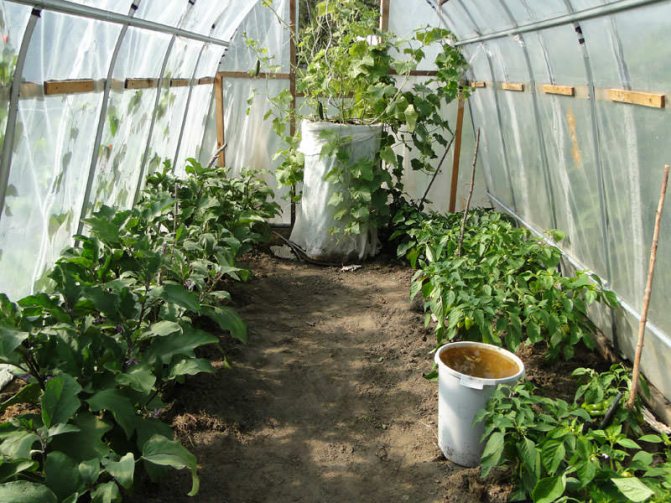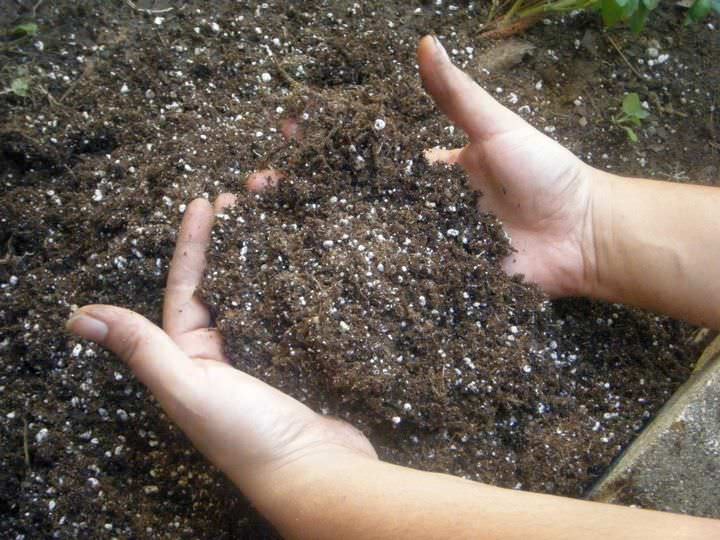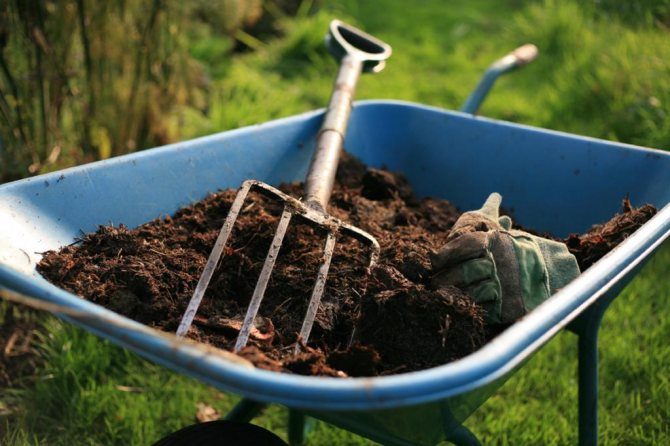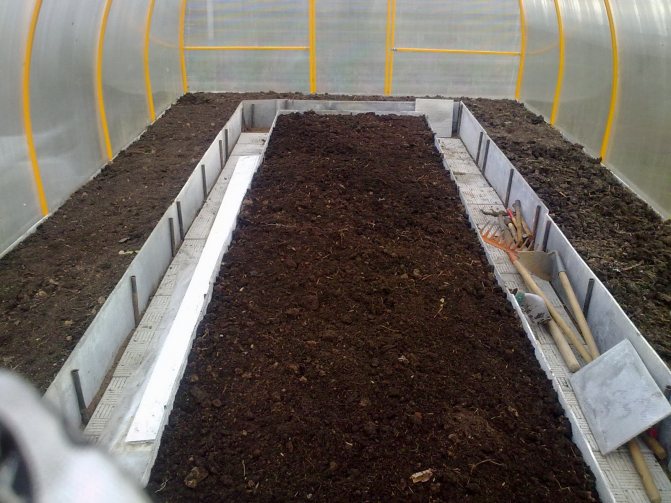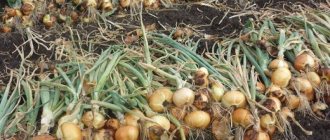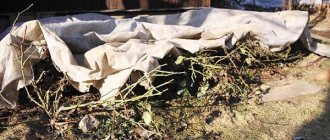To provide themselves with environmentally friendly, fresh greens, berries, fruits, many grow crops indoors, but not everyone knows how to prepare a polycarbonate greenhouse for winter correctly. In practice, this is a whole range of measures: cleaning, washing, smoking, disinfection, special processing of the earth.
In the article, we will tell you in detail how to prepare the greenhouse for the next season, we will share useful tips on how to do the right cleaning, how to process structures made of different materials, how to care for the soil.
Competent preparation of the greenhouse for winter is the key to a good harvest in the future
Why do you need to prepare a greenhouse for winter?
After harvesting, the greenhouse needs not only to be removed from plant residues, but also to carry out a number of measures.
Let's first consider why this is necessary:
- greenhouse conditions have a beneficial effect not only on planting, but also on pathogens remaining in the ground from recovered plants. So that the plants planted next year do not get infected, you need to carry out autumn processing;
- the carrier of infection can be not only the earth, but also the building itself, on which disease-causing spores are stored for several years. For this reason, the greenhouse must be disinfected;
- vegetable crops gradually deplete the soil, even if fertilizing is carried out. Therefore, in the fall, it is necessary to change the top layer of the earth, if possible, and every 4-5 years to carry out a complete replacement of the soil. The ideal option would be to move the greenhouse to a new location, but this is not always possible;
- polycarbonate is a fairly durable material, but some manufacturers indicate in the instructions that the greenhouse needs to be strengthened with additional supports for the winter;
- autumn preparation will save time in spring, when you need to deal with seedlings, and not cleaning and processing the greenhouse.
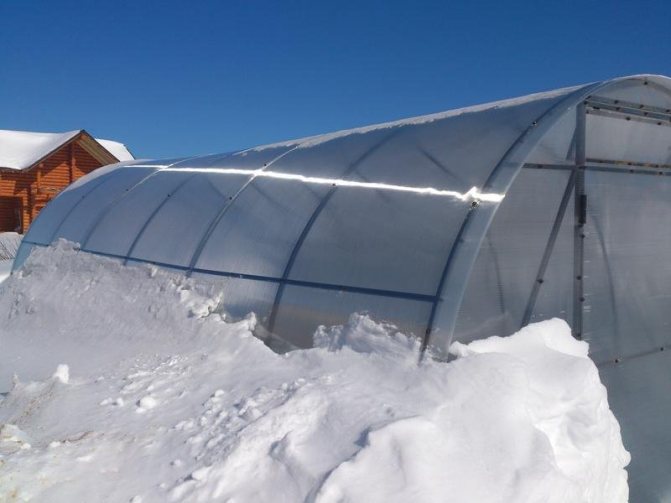
Disinfection of the internal space
Over the summer, pollen, flies and foliage leave their traces on the walls. Cloudy spots are visible on the inner surface. It is possible that somewhere there will be remnants of moss, which loves damp places.
The safest preparation for treating walls and metal structures is copper sulfate. It destroys fungi that colonize plants. Fungal colonies hide in any places where they are difficult to reach.
- For processing, you need to prepare a working solution. Dissolve 15 ... 20 g of copper sulfate in 5 liters of water. To stir thoroughly. The entire surface is processed with it. An arched-type structure with an area of 18 square meters will need about 5 liters of ready-made mortar.
- Garden spraying will help you get to the most awkward places. It is filled with a disinfectant solution and the surface of the walls is completely shed.
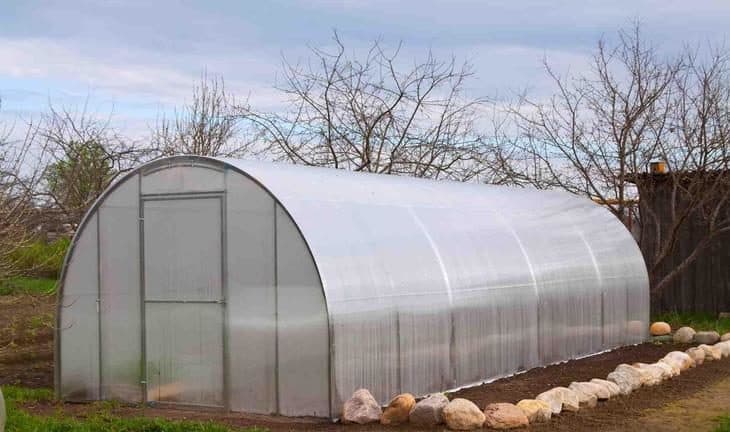

Personal protective equipment:
- rubber boots
- respirator
- protective glasses;
- cape made of plastic wrap.
It is necessary to carry out processing in the shortest possible time. Then let the entire solution drain completely from the walls. It can be washed off only after two days.
During this time, complete impregnation of all surfaces will occur. The harmful microflora will be destroyed.
Readers may ask the question, "How harmful is this treatment?"
To prevent the development of late blight on tomatoes, it is treated with solutions containing copper sulfate. In total, 15 ... 20 will be added. This amount is repeatedly introduced in the summer when processing tomatoes.
After two days, you need to wash off the remaining solution. Fill the sprayer with clean water, pick up soft sponges and rinse the inner surface of the greenhouse.
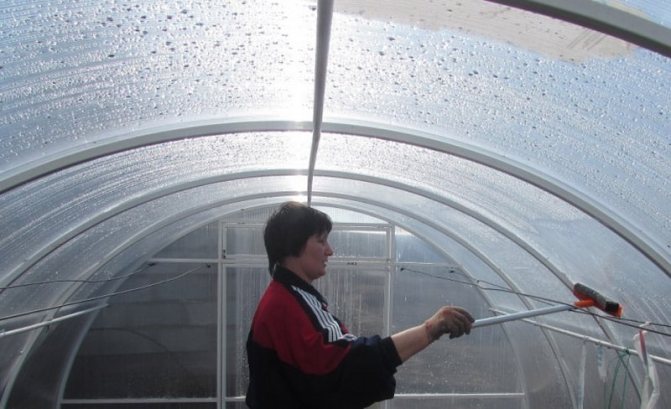

Fumigation with sulfur dioxide
When sulfur burns, poisonous smoke is formed, called sulphurous anhydrite. To process an ordinary greenhouse, it is enough to burn one sulfur stick.
Choose a place where you can install the checker.
- Set fire to the wick.
- Leave the room.
- All doors and vents are tightly closed.
- After three days, you can open the structure and ventilate it.
Sulfurous anhydrite combines with water to form sulfurous acid. It penetrates into all cracks and destroys harmful microflora. After airing for several hours, the acid is completely weathered.
Attention! Sulfurous acid is used in the food industry as an antioxidant. When heated, it completely evaporates from food.


Before fumigation, you need to inspect the presence of a protective coating on the metal frame. If it is damaged, then it should be painted over with a primer or combined primer-enamel.
Autumn processing of greenhouse beds
Autumn care of the beds consists of the following activities:
- cleaning plant residues;
- full or partial soil replacement;
- disinfection of the soil and the entire building.
spring-cleaning
Cleaning work is carried out in the following sequence:
- In sunny weather, you need to open the greenhouse and ventilate well.
- Remove all inventory (shovels, glanders, watering cans, secateurs, etc.) from the room.
- Disassemble and remove remaining equipment (hoses, supports, electrical wiring, etc.).
- Pull up weeds and vegetables by the roots, remove stakes, remaining vegetables, garters.
- Rake carefully, remove and incinerate any remaining debris.
- If the soil is not replaced, then the beds should be dug up, and the remaining roots should be selected from the ground.
Important! Sometimes gardeners leave plant residues in the greenhouse as compost. But plants can contain spores of various diseases and pest larvae, so it is better to burn them.
Removing soil
The soil replacement process is the most time consuming.
This issue is solved in several ways:
- if annual crops or seedlings are grown, it is recommended to replace 15 cm of the upper ball annually or at least once every 2 years. The soil is taken out to the garden or sprinkled on the trees. Instead, a ball of new earth is filled up (we will talk about options for earthen mixtures later in the article);
- when growing perennial crops (for example, strawberries), a complete soil replacement (about 30 cm) is carried out every 5 years. The ideal option would be to move the greenhouse to a new location;
- an alternative option is to dig a ditch up to 20 cm deep along the length of the beds and fill it with peat or humus. Green mulch (cut grass without seeds) is laid on top, which is sprinkled with ash. All this is covered with soil and watered with a urea solution (50 g / 10 l).
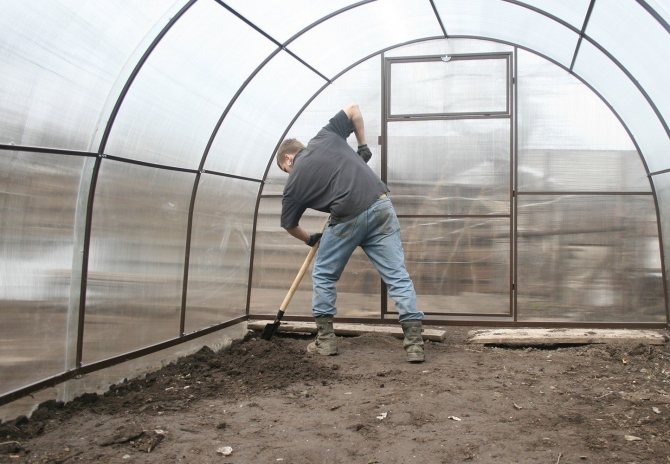

Disinfection
If the topsoil has not been replaced with a fertile and sterile ball, then it is necessary to decontaminate the soil.
The following methods are used to disinfect it:
- thermal disinfection;
- spraying with special solutions;
- bleach treatment;
- sulfuric fumigation.
Heat treatment consists of several stages:
- Boil water and spill the soil in the greenhouse with it.
- Cover the beds with a black dense film and press the sides to the ground.
- After a day, remove the cover, dig up the earth and level it with a rake.
- Scalding is repeated 2 more times with intervals of 3-4 days.
Did you know? The largest greenhouse built in the UK. These are two interconnected domed rooms. They have a huge variety of plants: from banana palms to grapes and olives.
Disinfection is also carried out using special solutions:
- preparations containing copper are used to prevent diseases such as late blight, bacteriosis and peronosporosis. This is especially true after growing a tomato. No more than once every 4-5 years, the soil is treated with a 0.1% solution of copper sulfate (10 l / 1 m²);
- the soil can be well watered with a concentrated solution of potassium permanganate (5-6 l / 1 m²);
- for spraying, 2.5% formalin solution, 2% creolin solution or 4% lime solution are used;
- opponents of "chemistry" use tobacco, garlic or mustard solutions, but such treatment does not guarantee 100% disinfection.
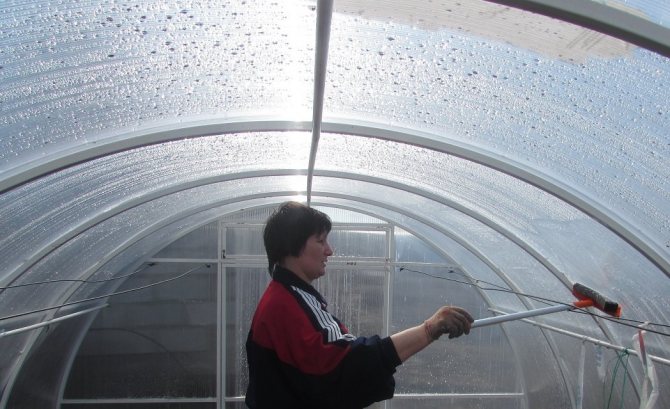

Bleach helps to get rid of almost all pests. 1 glass of the preparation is consumed per 1 m². The soil is sprinkled with lime and covered with a rake to a depth of 3-4 cm. Sulfur fumigation is often practiced to disinfect greenhouses. Previously, lump sulfur was used, and more recently, sulfur bombs. This method allows you to disinfect not only the soil, but also the entire structure. The disadvantage is that it is only applicable for large and tall greenhouses.
It is not recommended to use sulfur fumigation for greenhouses with metal frames, as the resulting sulfurous acid causes corrosion. An alternative to sulfur checkers can be tobacco checkers. The released nicotine smoke eliminates pathogens and pests. Such checkers are harmless even for metal structures, provided that they are painted.
How to treat a greenhouse from diseases and pests
How to prepare a polycarbonate greenhouse for winter. To prevent pathogenic bacteria from remaining in the greenhouse, it must be processed from the inside. The soil must be disinfected with humic acids, and the greenhouse itself must be treated with urea. To do this, you need to prepare a solution by combining urea with water. A quarter of a glass of urea accounts for up to 10 liters of water. Watering can only be done when the urea is completely dissolved in the water. Moreover, watering not only the ridges, but also the aisle.
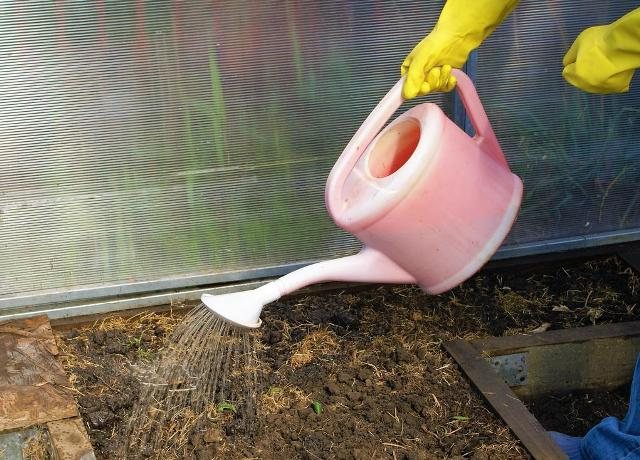

Also, the greenhouse is fumigated with sulfur from the inside. This sulfurous smoke allows it to penetrate every crevice, leaving no chance for pests. Sulfur can be used to fumigate the greenhouse outside. However, if the greenhouse has a metal frame, fumigation with sulfur is prohibited, as it will disrupt the structure of the metal. Sulfur smoke is prepared as follows: sulfur is added to kerosene and set on fire. You can just take a sulfur checker. The procedure lasts up to two days - when fumigated with smoke, obtained on the basis of kerosene and sulfur. If fumigation is carried out with the help of a sulfuric checker, then a quarter of a day is enough.
The frame for disinfection can be treated with a solution of vinegar and water, and boiling water is used.
The polycarbonate greenhouse itself must be disinfected with a hot and saturated solution of potassium permanganate. The greenhouse is washed both inside and out. Then the greenhouse must be left to air out.
How to process currants in the fall from pests and diseases
Greenhouse construction processing
Pathogenic microflora can winter not only in the ground, but also on the surface of the building itself. Also, during the period of operation, both the frame and the coating become dirty. Therefore, in the fall, you need to process the entire structure both inside and out.
Read more about how and how to treat the greenhouse in autumn and prepare it for winter.
Frame processing
There are no particular difficulties in caring for the greenhouse frame:
- the structure is carefully inspected for damage. If rust is found, it is cleaned, dried and painted over. Other damage is also subject to urgent repair;
- it is better to use a solution of laundry soap for washing, since it is non-aggressive, it removes dirt well and disinfects the structure;
- washing is done with soft materials (sponges or rags). All elements are wiped as dry as possible. It is better to ventilate the greenhouse to completely dry the structure.
Coating processing
There are several basic types of greenhouse coverings. Let's consider the nuances of processing each of them.
Polycarbonate
Polycarbonate is an impact-resistant material, but it can be damaged by various aggressive chemicals, so caring for it has some peculiarities.
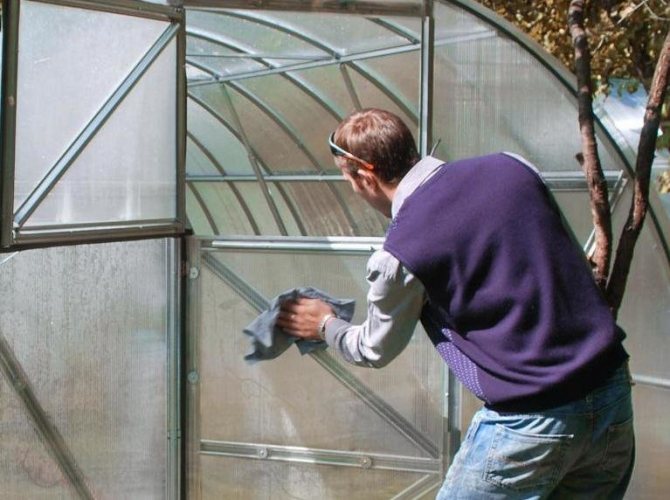

We will analyze how and how to wash polycarbonate:
- Do not use abrasive cleaners, detergents, dishwashing detergents or glass to clean the polycarbonate coating;
- Do not use brushes, wire scouring pads or other rough materials for washing. You can use only foam sponges, soft rags or napkins;
- stubborn dirt can be removed with a stream of running water. For stubborn dirt, soap foam is used, which is thickly applied to the surface and left for 10-15 minutes. Then the foam needs to be washed off well;
- you can disinfect polycarbonate sheets using a solution of potassium permanganate. Any non-coarse material is wetted in a saturated solution, and all surfaces are wiped;
- after wet cleaning, the greenhouse should be well ventilated for the moisture to dry completely;
- the outer surface is also cleaned with soapy water.
Important! Polycarbonate is easily damaged by treatment with aggressive compounds, and alkalis also cause it to become cloudy and disturb the UV film. Such manipulations make it vulnerable to the sun, which causes rapid deformation and destruction.
Film and glass
When cleaning glass, adhere to the following rules:
- washing can be done with a window mop, washcloth or nylon brush;
- unstable dirt is removed with a foam rubber sponge;
- the joints between the frame and the glass cover are cleaned with a sharpened wooden stick wrapped in a cloth;
- as a detergent, either a solution of laundry soap or dishwashing liquid is used;
- you can disinfect glass by rinsing it with bleach (4% solution);
- the coating is wiped off with a dry cloth. The greenhouse is left open to ventilate and dry all surfaces.
Removable film cover
Autumn care for a removable film cover consists of several stages:
- The film is removed from the frame.
- Carefully, so as not to damage the coating, it is washed with a sponge dipped in a solution of laundry soap.
- Rinse thoroughly with clean water.
- For disinfection, it is wiped with a 5% solution of copper sulfate.
- It is left to dry completely.
- Rolled up and sealed. In this state, it is stored until spring.
Strengthening the frame
Greenhouses are made of fairly durable materials, and their streamlined shape prevents snow from retaining on its surface. But in too snowy winters, unforeseen situations are not excluded.


Therefore, in the fall, it is better to strengthen the frame with additional props. You can use the services of manufacturers and purchase additional arcs, or you can do it yourself. For self-production of T-shaped props, wooden beams are perfect. The supports are placed under the top of the greenhouse, and a solid foundation is placed under the bottom so that they do not fall into the ground. If the length of the greenhouse is about 6 meters, then 3 or 4 supports will be enough.
General cleaning in the greenhouse
In the fall, the greenhouse must be carefully cleaned. All plants are uprooted and removed from the greenhouse. It didn't matter if the annuals or perennials basked in the warm, humid greenhouse climate. You cannot leave them for the winter. They can become a source of disease for new plants. Annuals must be torn out and disposed of.Diseased leaves are removed from perennials, then the plants are dug up by the root. In spring, new young specimens are planted in greenhouses.


After the plants are harvested, the greenhouse needs to be washed. In order not to leave scratches on the covering material, you need to take a soft cloth. A sponge will do too. Dirt is washed off with soapy water. Then everything needs to be rinsed with clean water. After arranging ventilation, dry the greenhouse.
Laying new soil
The soil in the greenhouse should be loose and nutritious, with a good humus content. And the increased planting density and regular operation greatly deplete the soil in the greenhouse. For this reason, it is necessary to restore soil fertility and replace it. Usually the greenhouse is covered with non-whole soil, peat, compost or leaf soil are added to it.
Let's figure out what these supplements are:
- peat soil is humus-rich soil collected from swamps. When harvesting, layers of peat must be sprinkled with manure and lime. On light soils, about 20 kg / 1 m² is applied, and on heavy soils - 15 kg / 1 m²;
- compost soil is the most readily available option. It is decomposed food waste, which is stored in a separate heap. After a few years, this pile, thanks to the vital activity of microorganisms, turns into an excellent fertilizer;
- leaf land is the introduction of plant materials into the soil. But its productive qualities are slightly inferior to the two previous options. In the total amount of soil, it should be at least 30%. When introducing plant residues, it is necessary to ensure that they are not contaminated with diseases and that they are free from various parasites.
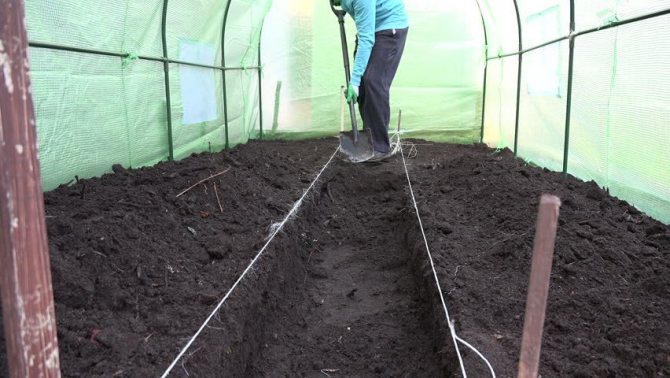

Many vegetable growers have their own recipes for earthy mixtures. Their composition depends on what kind of crop will be grown.
We offer several examples of soil mixtures:
- for tomatoes, 60% peat and 20% compost and sand are suitable. Tomatoes are sensitive to cold, so it is advisable to make the bottom layer from sawdust or straw;
- cucumbers will grow well on a mixture of 5 parts of peat and 2 parts of leafy soil and humus. Just like for a tomato, you can make the bottom ball out of straw or sawdust;
- for strawberries, a mixture of 6 parts of turf and 2 parts of sawdust is a good option.
Did you know? The Icelanders came up with the idea of arranging hotbeds on geysers. It is both economical and beneficial.
Rules for preparing the cover and frame of the greenhouse for wintering ↑
It is best to disinfect a wooden frame with a 5% or 10% solution of copper sulfate. Metal and PVC frames can be simply washed with boiling water and vinegar. The film and glass are treated with soapy water. A solution of potassium permanganate is suitable for cleaning cellular polycarbonate.
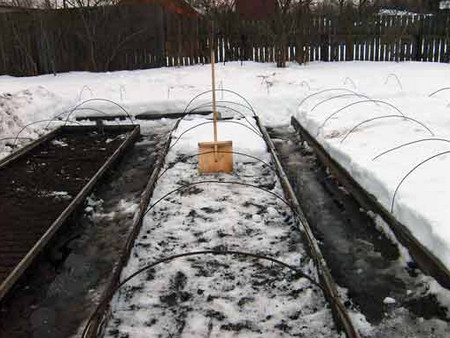

Low greenhouses are removed for the winter, and the dug beds are covered with snow
The film cover should be removed, rinsed, dried and folded in a dry place until next year. Non-dismountable glazed and polycarbonate greenhouses can be reinforced from the inside with additional support posts so that the snow cap does not damage the roof. When the snow falls, be sure to throw it generously in closed greenhouse beds. For this work in the spring, Mrs. Flora will thank you with a bountiful harvest. Go for it!
Summer residents advice
Finally, we will give some tips from experienced gardeners:
- in late autumn, you need to open the doors of the polycarbonate greenhouse. This is necessary so that the frost destroys the remaining pests, and the same temperature inside and outside the greenhouse will prevent the formation of icing on polycarbonate;
- in winter, the soil in the greenhouse must be covered with a layer of snow of about 20 cm. This will protect the soil from freezing and saturate it with moisture;
- usually 10-15 cm of the top ball of soil is replaced, but a new ball of fertile soil can be poured on top of the depleted soil.
We will be glad if these tips are useful to you.Early and good harvests in your greenhouses!
Strengthening the greenhouse frame from snow
How to prepare a polycarbonate greenhouse for winter. Often, gardeners get an unpleasant surprise in the spring - the greenhouse is squinting from the weight of the snow. Such a greenhouse is not suitable for growing plants. Therefore, in the fall, it must be prepared for wintering.


Props will come to the rescue, with which you need to tuck the roof of the greenhouse. The more props the better. If the greenhouse is located in an area where the winds are walking, there should be many supporting devices in the greenhouse. These devices should not be on the ground, as under the weight they will go into the soil "knee-deep", so there will be no benefit from them. Supports are placed on a hard surface - boards, metal sheets.
When preparing the supports, it must be borne in mind that the polycarbonate coating is able to withstand a layer of snow up to 70 cm. A layer of 80 cm is already becoming critical. Also dangerous for polycarbonate will be a 40-centimeter layer of packed wet snow. Therefore, the area where greenhouses are installed should be regularly visited in winter and snow removed from the surface of the greenhouse.
Pros and cons of an open greenhouse
Why is it better to leave the greenhouse open in winter, you ask? As supporters of this method note, the soil in an open greenhouse rests and is disinfected naturally.
Maximum proximity to natural conditions has a beneficial effect on the earth cover. Snow masses that fall inside the structure moisturize the soil well. In severe frosts, the soil in the greenhouse freezes, bacteria, microbes and pathogens of various fungal and viral diseases die. During the thaw period, the soil warms up, is saturated with useful microelements and vitamins.
With the arrival of spring warmth, the soil has rested, refreshed and is ready for planting new fruit and vegetable crops. On such a soil, high yields should be expected.
A greenhouse that is open for the winter also has some disadvantages. First of all, it is necessary to say about possible damage to the structure. Most often, such troubles occur in regions that are characterized by strong winds and hurricanes. To avoid damage to the frame or the greenhouse lining, you should prepare for the winter. First, you need to remove all plant residues and clean the inner surface well, then you can start strengthening the opening elements.
Some companies engaged in the production and sale of ready-made greenhouse structures offer to the attention of gardeners complexes that correspond to the characteristics of a particular region.
It is up to you to open the greenhouse or not. But be ready in the spring to meet new "tenants" who have settled in a place protected from wind and snow. We are talking about stray cats, dogs and other animals.


